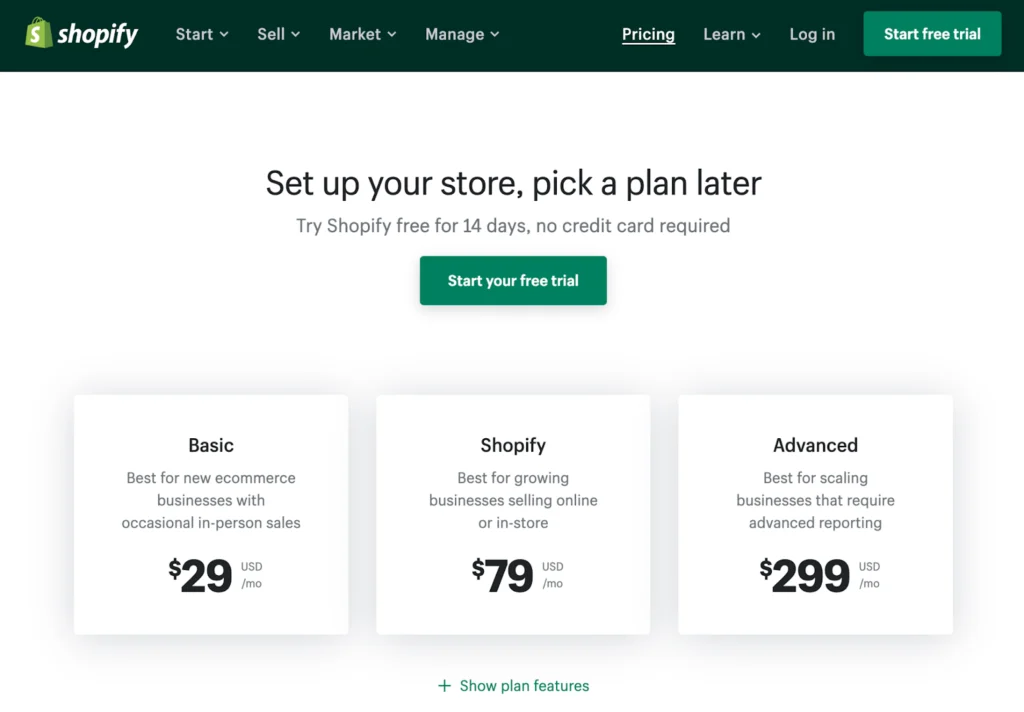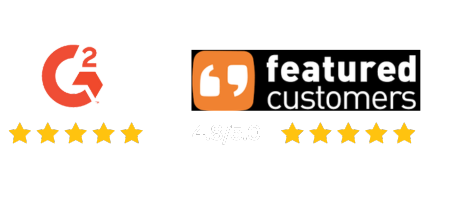How to Start Your Ecommerce Business with Shopify and Google Shopping in 2023

Despite what most people think, Amazon is not the only place online to buy products. In fact, it’s estimated that there are somewhere between 12-24 million ecommerce stores at any one point in time. Most of these stores don’t gross more than $1,000 a year, so there’s still plenty of time for you to become the next internet juggernaut.
If you want to become the next Jeff Bezos, there are two tools that can make that path easier: Shopify and Google Shopping.
Shopify is an ecommerce platform that you can use to build your store, while Google Shopping is a paid ads engine that can put your products right in front of your target audience. Individually, they’re capable online platforms, but they can turn your business into an empire (almost) overnight when paired up.
So what are some of the best ways to use them together? That’s what we’re going to explore in this article.
Gather Market Research
Before you can have a store, you need a product. But before you can have a product, you need to perform in-depth market research to determine what opportunities are available.
Start by making a list of five different industries you would like to explore, then open a tab on Google Shopping to explore various items within those niches. Make a list of the top-selling products (found by utilizing Google’s Best Seller Report), and note how many variations each product has.
While you’re there, click on the reviews of some intriguing items. What are people saying about the products themselves? Can they be made better? Can you improve on the quality, deliverability, or customer service of already-popular items? If so, you may have a winner on your hands.
Design a Niche-Appropriate Site
Shopify has hundreds of templates you can use to create your ideal store, so poke around a bit to see what’s available. If your product is more tech-centered, find one with muted colors and imaginative fonts. For more traditional products, earth tones and serif fonts work great. You can also use online platforms like Quicktools by Picsart to find more font alternatives for your Shopify website.

Beyond the simple site design, take advantage of Shopify’s customization features to move images and text around and put your product center-stage. If you have a blog — handy for ecommerce stores where audience education is necessary — include a carousel with your most visited blogs.
This part of the process may include hiring a designer to optimize your site for you. If so, factor that into your budget. Choosing the right vector images to include on your site could also increase your conversion rate and improve your branding.
From a technical perspective, you should also consider implementing a sales CRM on your site to create a more customized experience for your customers. A CRM for your Shopify store can be integrated with your Google Shopping account to display the right products to the right customers, increasing your bottom line exponentially.
Understand Your Budgets
The starter package on Shopify will cost you $29 per month (after a 14-day free trial), but you could spend as much as $300 per month if you wanted to. The more expensive plans include better reporting, staff accounts, lower per-purchase fees, and multi-location and international shipping support. But you have to figure out what’s important to you at this stage.

Whether you’re just starting or scaling your business to the heavens, make sure you pick the plan that will suit your needs.
When you’re just starting, the base package is probably enough. However, as you grow, you’ll need upgraded plans to keep overall costs low. Additionally, if you have lots of products, consider investing in a virtual assistant to help upload images and product descriptions and a copywriting tool to help you with your website copy. Since there are tons of great tools out there, make sure to take your time and check online comparisons, very much like this post on Jasper.ai vs Copy.ai.
Understanding your overhead costs is only half the battle. To get your products to the front of Google Shopping’s platform so they can be sold directly to potential buyers, you’ll need to allocate a paid ads budget.
Most ecommerce companies allocate around 10% of their total budget to paid ads, but more aggressive businesses can spend upwards of 30%. As more companies move online, the ad spend for online businesses is expected to grow with it.
Protect Yourself Early
One aspect of ecommerce that very few entrepreneurs think about is protecting themselves from liabilities. Since many first-time business owners (or even serial entrepreneurs) operate their business from home, it’s extremely important to separate your personal assets from those of your business.
Depending on the size of your business, you could file for one of several different tax entities:
- Sole Proprietorship
- Limited Liability Company
- Corporation
- S Corporation
Most new businesses begin as a sole proprietorship for simplicity’s sake. The main drawback here is that the business becomes an extension of the owner. If the business is sued for any reason, your personal assets can be at risk.
Taking a few steps to ensure proper business formation may not seem like a big deal right now, but it could be huge down the road.
Unless you’re planning on starting by filing a corporation (which has certain advantages but can also be more costly), an LLC will probably be your best bet as a new ecommerce store. There are several different types of LLCs, so it’s important to determine your business’ legal structure.
To get an LLC, you’ll need three key documents: Articles of Organization, an Operating Agreement, and an Employee Identification Number. With the exception of the EIN, you’ll also have to make certain decisions regarding your company. This includes how many managers your LLC will have, its voting rights, and what happens when the LLC is dissolved.
This may be awkward since your business is just starting out, but the quicker you can make these decisions, the more efficient your operations will become.

Connect Supporting Ecommerce Tools
Connecting ecommerce tools to Shopify can significantly enhance your online business’s efficiency and productivity. By integrating additional ecommerce tools such as email marketing software, inventory management, returns management tools, and shipping and fulfillment apps, you can streamline your operations and save time and money.
For example:
- Email marketing tools can help you create targeted campaigns to reach your customers
- Inventory management tools can help you track and manage your products effectively.
- Returns management tools can automate RMAs, warranties, and exchanges while providing real-time returns visibility and data analytics.
- Shipping and fulfillment apps can also automate the process of shipping your orders, saving you time and reducing the likelihood of errors.
Connecting ecommerce tools to Shopify can provide you with a competitive edge and help you grow your online business.
Create a Marketing Strategy
Shopify is a robust platform. Not only does it have secure payment options, giving customers the ultimate flexibility in ordering directly from your store, but it also has third-party apps that can increase your revenue. You can create referral programs through apps like Smile, manage your social media with Kit, and sell print-on-demand items with Printful.
With so much at your disposal, how will you actually reach your audience?

Your first step should be taking advantage of the world’s biggest search engine. Shopify has apps that can help you optimize your SEO, but you can also integrate your Shopify store with Google shopping. This will let you upload products directly.
Moreover, you can configure it to list new products on Google automatically as soon as they’re uploaded to your store.
Once you have the products integrated, you’ll be able to manage paid ads campaigns from a single platform, managing budgets and optimizing keywords with ease. Reporting will also be streamlined. You’ll be able to see which products are doing well so you can introduce complementary products into your store for upsells and cross-sells.
Build for Mobility
One of the best aspects of owning an ecommerce store is that you can manage it from anywhere. From bookkeeping to customer service, every step can be handled either by an app or Shopify’s suite of connected services.
You can even manage your store’s inventory remotely.
Procurement management is a big part of day-to-day operations. Mismanage it, and unhappy customers will find somewhere else to buy what they need. Fortunately, Shopify takes the headache out of this process by optimizing your supply chain for you — as long as you have the right apps installed.
With a VPN, you’ll be able to encrypt your data and protect yourself from virtual hacking attacks when you log in to Shopify away from home. You can also see how your site appears in other countries. You may run into some issues using a VPN with third-party apps, but running it through Shopify — which acts as your digital headquarters — shouldn’t pose any issues.
Conclusion
Whether you want to add an ecommerce store to your online empire or enter the entrepreneur world for the first time, starting on the right foot is key. Take advantage of the tools you have at your disposal, and you’ll give your site the best chance for success.
Ready to simplify your returns management?
Schedule a free ecommerce returns audit today!
About the author

Guillaume is a digital marketer focused on handling the outreach strategy at uSERP and content management at Wordable. Outside of work, he enjoys his expat life in sunny Mexico, reading books, wandering around and catching the latest shows on TV.






